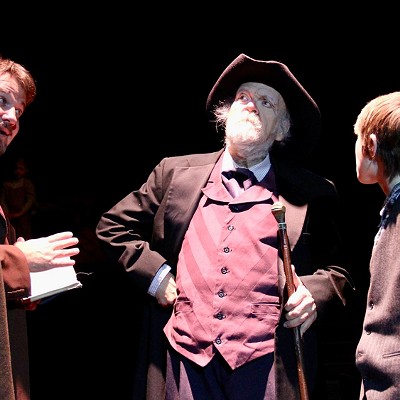White, the longest-tenured council
member, said he believes the council membership should reflect the
city’s population. However, the way ward boundaries are drawn puts
minorities at a disadvantage, he said.
Three proposals were discussed during a
special council meeting Tuesday that included adding two wards, four
wards or redrawing boundaries for the current eight wards.
No decision was made, but city staff
members were instructed to draw new boundaries for the current wards
with an emphasis on the Capitol Hill area because of its large
Hispanic population.
The only minority council members are
Meg Salyer, a white female, and John Pettis, Jr., who is black. The
2010 Census shows whites comprise 56 percent of the city’s
population while Hispanics make up 17 percent. Blacks comprise just
over 15 percent of all city residents, Census data shows.
“The only times African Americans
have been elected (to the city council) was after the wards were
redrawn and the same thing is happening to the Hispanics,” White
said.
The first black elected to the city
council was Charles Atkins in 1966 following a court case that
mandated OKC redraw its ward boundaries.
Targeting Hispanics
White, the Ward 4 representative, is an
ardent supporter of diversity among elected officials and proposed
that one of the new wards be drawn around the largely Hispanic
community in south OKC.
“Why don’t we just put together a
selection committee to assure we get one (Hispanic councilman),”
Ward 8 Councilman Pat Ryan said.
Ward 5 Councilman David Greenwell
suggested city officials “manipulate” Ward 6 boundaries, which
include the largest number of Hispanics in OKC. Salyer is the Ward 6
representative.
However, White shot back that “it is
not my goal to manipulate the wards and assure anyone a seat. I want
to draw the lines to give people an opportunity for a seat.”
White predicted if OKC does not change
ward boundaries the council will return to an all-white panel within
10 years. White, the Ward 4 councilman, predicted Ward 7, a largely
predominant black area, will be represented by a white man.
“The big growth in Ward 7 is along
the north side near Edmond,” White said. “We’ll be back where
we were if we’re not sensitive to it. The disparities should be
minimized.”
At one point during Tuesday’s
discussion, Salyer suggested Hispanic citizens interested in local
government should get involved in volunteer ways and “build strong
candidates” who can win an election.
“That sounds good, really good,”
White replied. “Good luck. It’s not going to happen.”
Meanwhile, Ward 2 Councilman Ed Shadid
said the lack of diversity on the council also is a problem among the
membership of the city’s boards, trusts and commissions.
“Seven are Latinos, 13 are African
American and 20 percent are women,” the councilman said. “There
are so few minorities coming through the system.”
Shadid said he favors more wards
because of the large amount of money it takes to win an election.
“There are hundreds of thousands of
dollars in these council elections and who can do that,” he said.
“Having 10 wards decreases the power of that money.”
Ward 3 Councilman Larry McAtee argued
the focus should be on finding leaders who can “work together”
instead of race or ethnicity. McAtee said he opposes new wards
because it increases the size of government.
“More representation isn’t
bureaucracy,” Ward 1 Councilman James Greiner replied. “More
representation means more accountability.”
Each council member represents about
72,500 people, city records show. Going to a 10-ward system would
reduce that figure to about 58,000 residents and a 12-ward setup
would leave each councilman with about 48,000 constituents.
Pettis, who
operates two nonprofit groups, bragged that he attends neighborhood
associations several times a week in order to meet the people he
represents.
“If I’m not in northeast Oklahoma
City, I’m in southeast Oklahoma City,” he said.
“Yeah, but some of us have full-time
jobs and it’s not easy to do that,” White replied. “The charter
assumes we’re not all retired wealthy people. For some of us, it’s
difficult to fulfill all of these responsibilities.”
OKC council members earn $12,000 a year
in their part-time roles as elected officials. The mayor earns
$24,000 a year.











